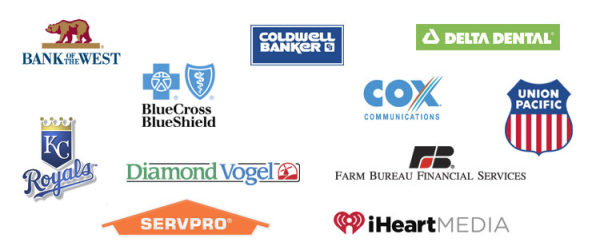NOTE: This week I am running a guest article written by my friend and colleague, Anthony Iannarino, who just released a new book, Elite Sales Strategies: A Guide to Being One-up, Creating Value and Becoming Truly Consultative.
By Anthony Iannarino
The discovery call has been fully and completely commoditized. We are using the word “commodity” as economists define it. A commodity is fungible (meaning interchangeable) and the market has no concern about who produced it. One is as good as the next. That is the bad news. The good news is that anytime something is commoditized, it’s easy to create the meaningful differentiation that would transform it into something people care about because it is more valuable.
Let’s look at a typical sales call. The salesperson walks into the client’s office and starts with a little small talk, hoping to create the rapport that would make them more comfortable. They offer the client an agenda that starts by sharing information about their company, after which they suggest that they’ll ask some questions to “learn a little about” the client and their company. With that agenda firmly established, the salesperson predictably brags about their company and the clients they serve, hoping to prove that they are credible before launching into questions designed to identify the client’s pain point. Following this training is the key to their ultimate goal: proposing their solution.
Imagine how familiar this script must be to your prospective clients, most of whom have experienced the traditional sales call dozens or hundreds of times. When there is no difference between one meeting and the next, that conversation is a commodity. Producing yet another carbon copy of your competitor’s commoditized conversation makes you One-Down in the worst way possible.
Your opening should position you as an expert with the ability to compel change and a preference to buy from you. How are you opening a sales call now, and how does it create value for your clients? A One-Up salesperson can control the process, leading the client and gaining commitments to all the conversations necessary to produce better results. How much control do you have over the process now and what competencies do you have in place to prevent deals from stalling? Answering these questions honestly and thoroughly will help you identify gaps in your performance, the first step to being more One-Up in your approach.
Things to Stop Doing
Starting with “Why Us.” This One-Down approach is out of sync with your contact’s needs. They don’t need an answer to this question early on and it feels as if you are pitching the client (mostly because you are). This approach makes you a bad first date, spending your time talking about your company when your client hopes you are there to help them improve their outcomes.
Personal Rapport-Building. You are One-Down when you try to create rapport in hopes of being liked. We have to carefully thread the needle here. In general, the new rapport-building is a business conversation in B2B sales. After the meeting, if your client wants to have a personal conversation, there is no reason not to work on a personal relationship to accompany your commercial relationship. However, different locations may mean different customs. If your territory is one where your clients expect a personal conversation before the business conversation, don’t ignore the cultural norms.
Commoditized Discovery. The One-Down goal of discovery is to identify a “gap,” a “pain point” or a “source of dissatisfaction.” If that’s all you’re doing, you are repeating the same conversation your client has had dozens or hundreds of times. It’s not that these things are not important, but that you need to create more value before you get there.
Differentiating Your Company and Your Solution. When every salesperson begins a conversation by sharing information about their company or their solution, doing the same thing won’t differentiate you. Approaching the sales call this way means starting from a One-Down position with a person who needs you to be One-Up. Your conversation is the only way to provide real differentiation.
Following the Client’s Lead. There is a certain variety of faux sales experts who suggest that you should allow your client to tell you what comes next. These poseurs would have you occupy the position of One-Down, never leading and never taking charge. But allowing someone who rarely travels the path they are on to lead the journey is negligence at best, and a dereliction of duty at worst.
Things to Start Doing
Establish Yourself as a Potential Strategic Partner. The more you present as a One-Up expert who can cover the gaps in your client’s knowledge and experience, the more you look like a strategic partner. The more you brief clients and keep them up to date on what’s important, the more they’ll come to rely on you to take care of that part of their success.
Compel Change and Provide Context. There is a subtle but critical difference between the One-Down elicitation of a client’s pain points and the One-Up approach of teaching them why they have those pain points. In the first case, you are trying to force your solution into the conversation, and in the second you are helping your client recognize the reason they’re struggling. In the first you are asking for information; in the second, you are providing information and insights that provide you and your client even more information. Decision-makers and leaders already want better results; they just struggle to find people who can help.
Differentiate in the Sales Conversation. The only effective way you create differentiation is through the sales conversation. The differentiation you need to provide comes from your insights and your ability to make sense of your client’s world, providing them with a higher-resolution lens through which to view their decisions and their future results.
Facilitate a Needs-Based Buyer’s Journey. Much of the new sales conversation is about the One-Up approach of filling the gaps in your prospective client’s knowledge and experience. By recognizing what your client needs, you can better provide them with information, insight, and recommendations to ensure they succeed. Remember: there is no buyer’s journey; there are only buyers’ journeys. You need to lead.
When you start a conversation from the One-Up position, you will find that your clients mostly want to understand. They’ll interrupt you with questions, and they will often share examples of how what you are sharing is already causing them problems. Don’t bother asking your client what’s keeping them up at night. Instead, seek to teach them what should be keeping them up at night or, better yet, explain why even the strongest chamomile tea can’t overcome the mind-blowingly rapid changes in their environment. Later, when we look at how to help our clients change, you’ll know to start by addressing the root cause of their problems, not just their temporary insomnia.
This article was excerpted from Elite Sales Strategies: A Guide to Being One-Up, Creating Value, and Becoming Truly Consultative by Anthony Iannarino.









